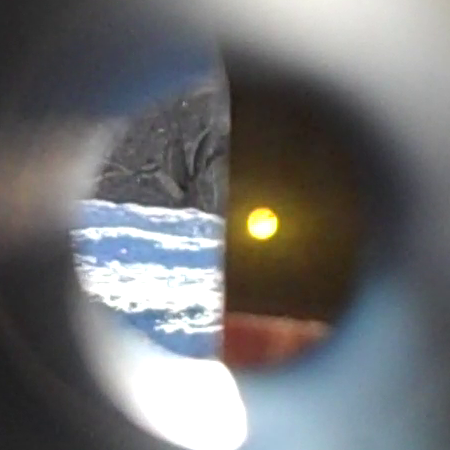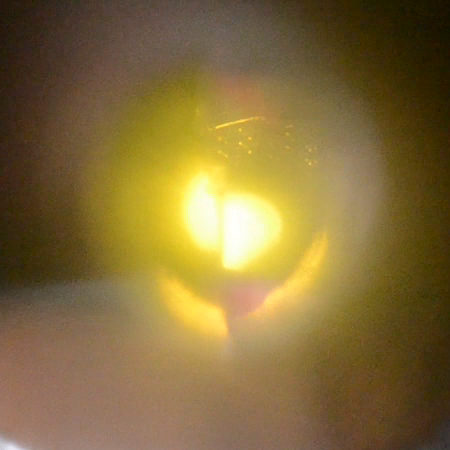|
Sextant - Why it Works and How to Use it
| ||||||
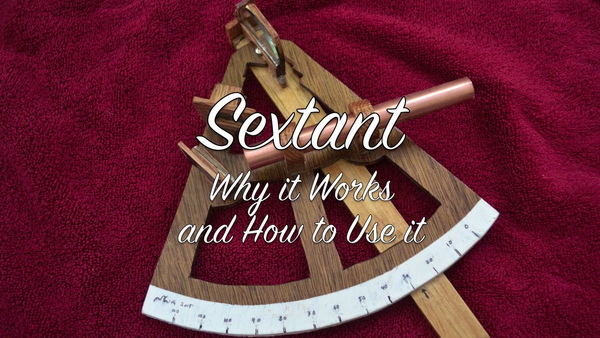 video
Intro
It does this with a series of mirror, two images are set side by side. In this case we can measure the angle between the base and top of a tree. Sightlines and AnglesA sextant measures angles between sightline by viewing those sightline through a series of mirror. It then adjusting the angle of the sightline by changing the angles of the mirrors.The horizon mirror is infront of only half your view. So the view to the left is straight. The view to the right is towards the index mirror. What you see in the index mirror depends upon the angle of that mirror. One of the curious features of a sextant is that if you change the angle of the index mirror by 10-degrees, you change your view by 20-degrees. This is because changing the angle of the mirror changes both the angle of incident and reflections, giving it a doubling effect. 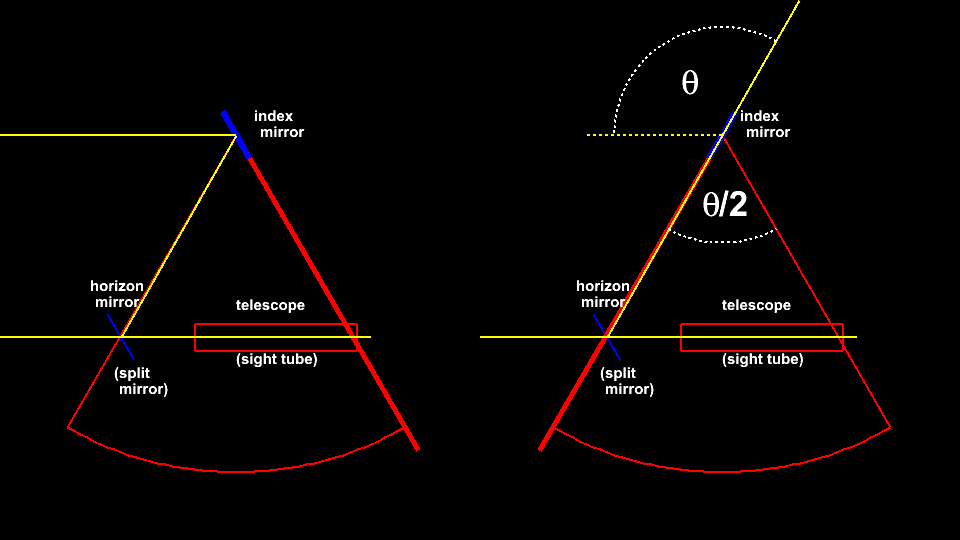 Measuring the Sun's "Elevation"
-
Calculating Latitude from ElevationOn the equinoxIf we took our sighting on the spring or fall equinox, and the sun was directly overhead, we would know we were on the equator. If it was on the horizon, we would be at a pole. So the latitude is 90-deg minus the elevation we measured.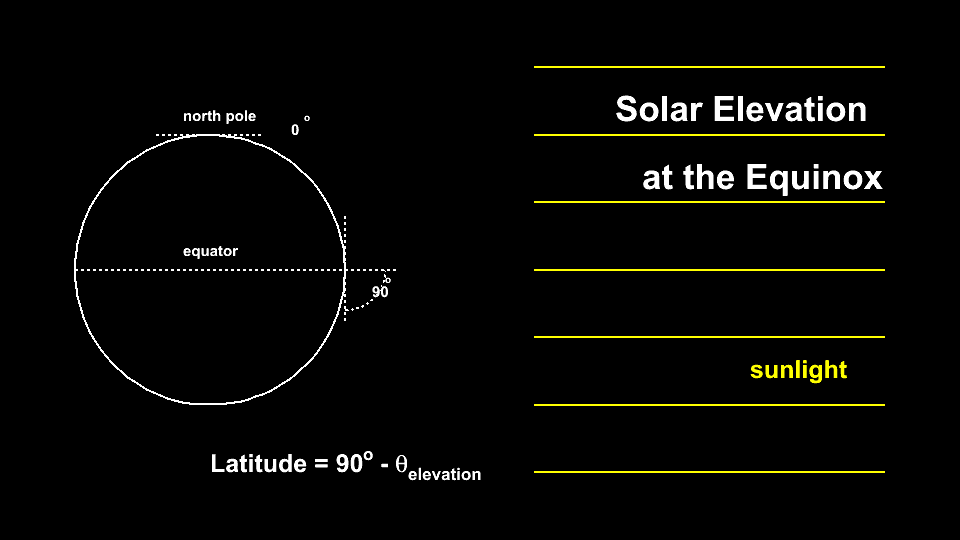 Summer, Winter or any dayOf course it is not always first day of spring or fall. On the winter solstice the sun is low in the sky and we would add 23 deg.On the summer solstice it is high and we subtract 23-deg. This correction, which changes every day, is called declination - and you can find in tables.
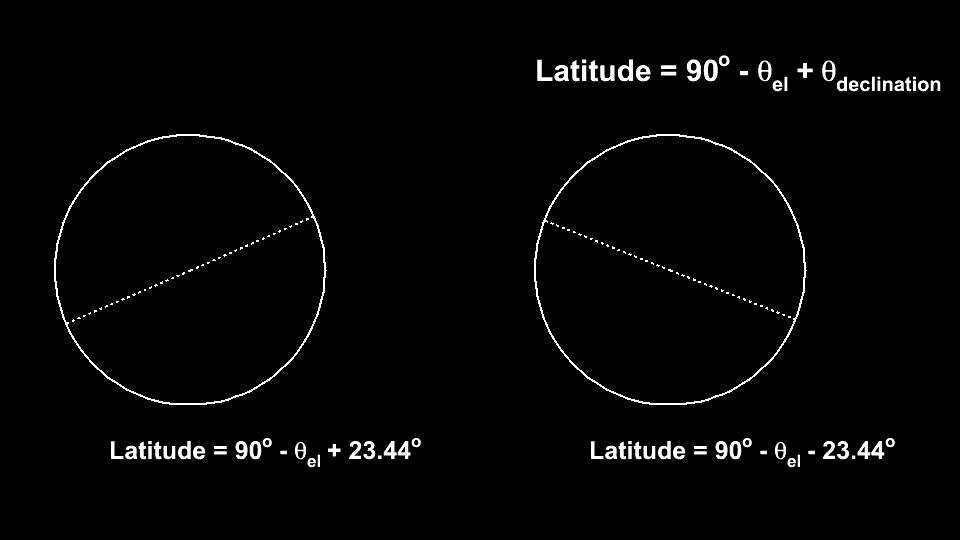
Solar Declination Table(click here to download .pdf)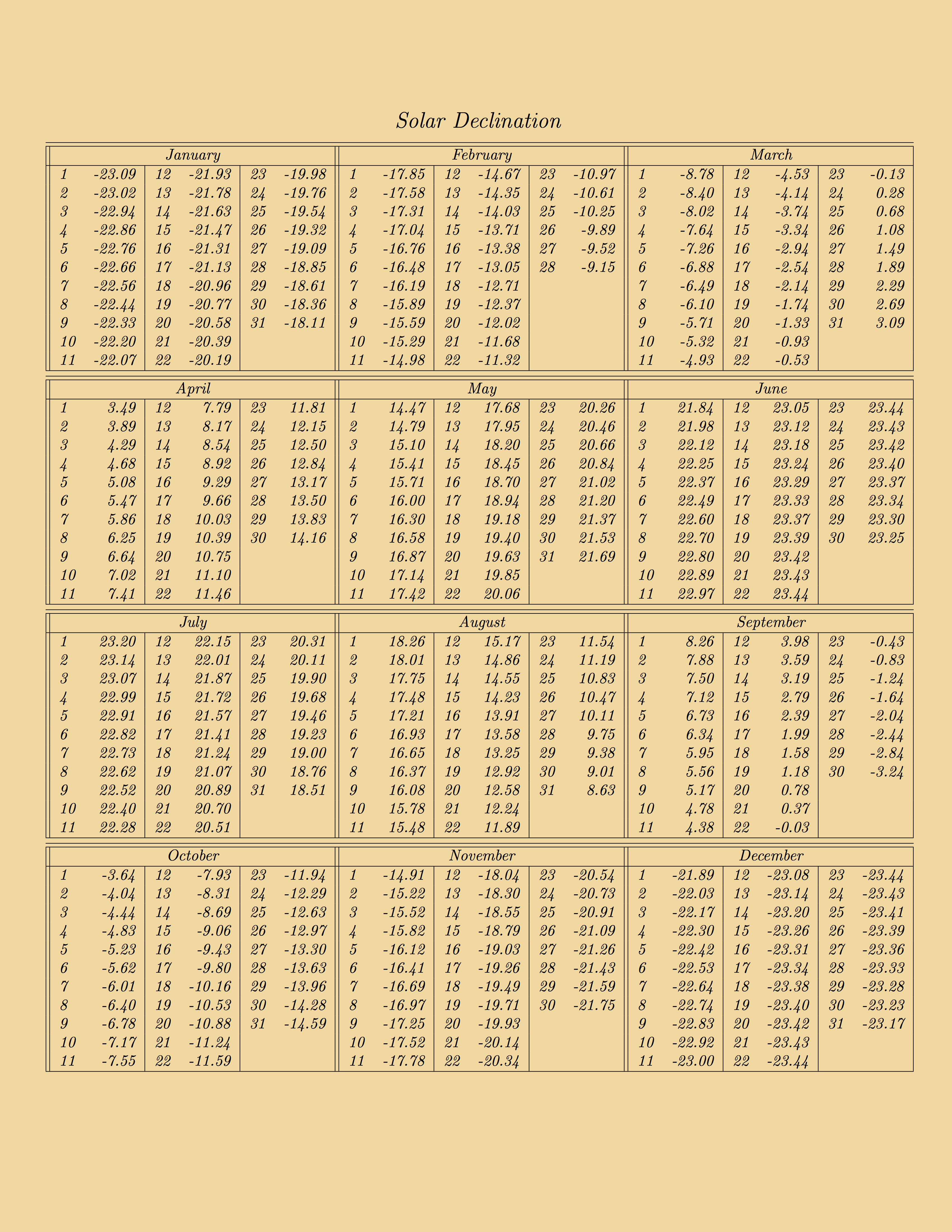
False Horizon
Now, you will see two images of the sun. The left one is a reflection off the pool of water. The right one through the sextant. The angle between them is twice the solar elevation. 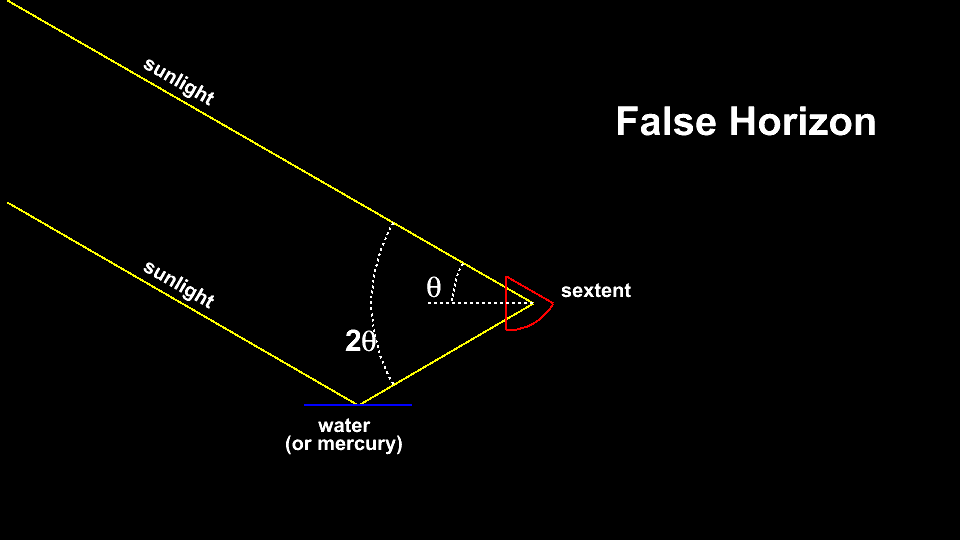
|

